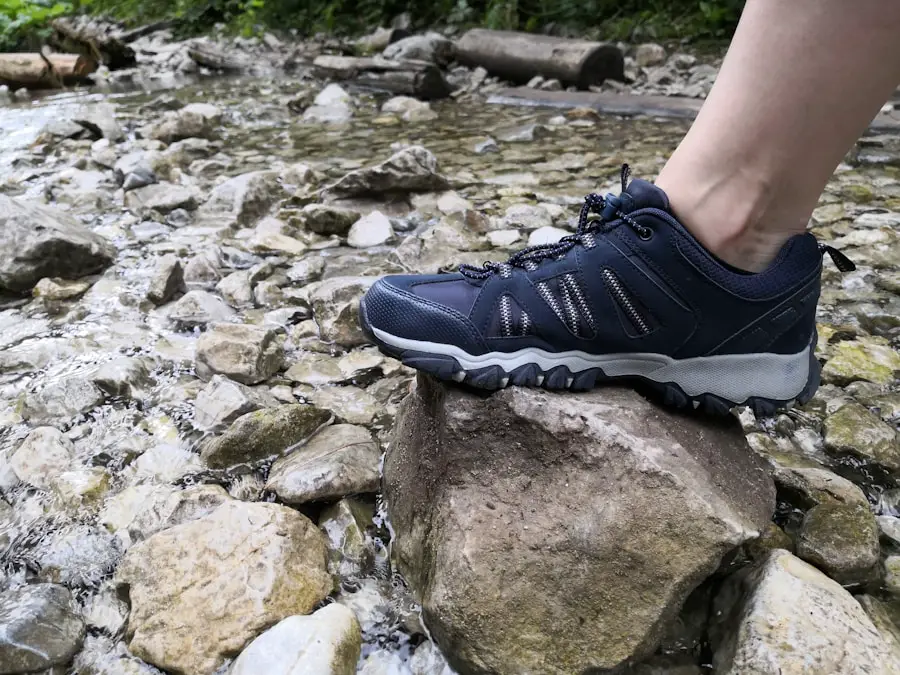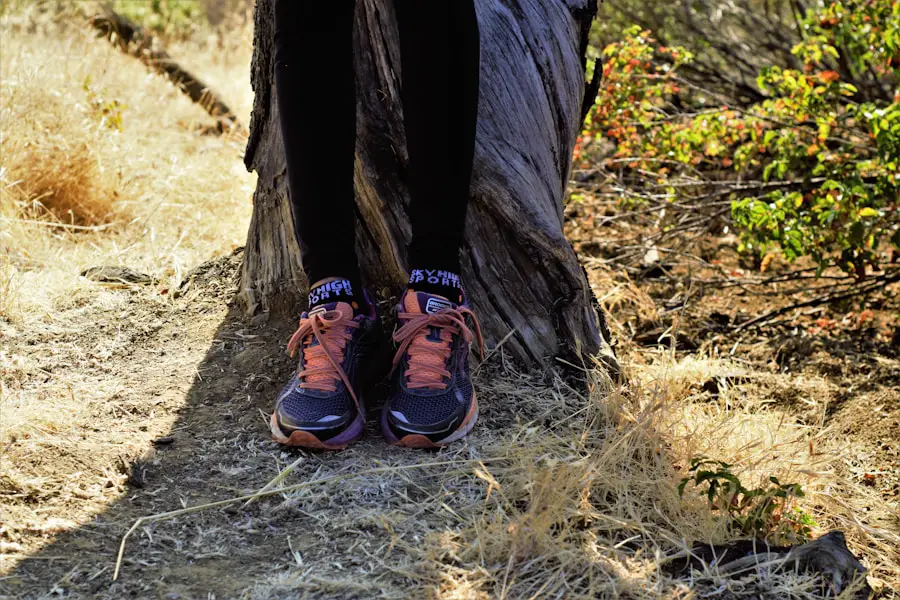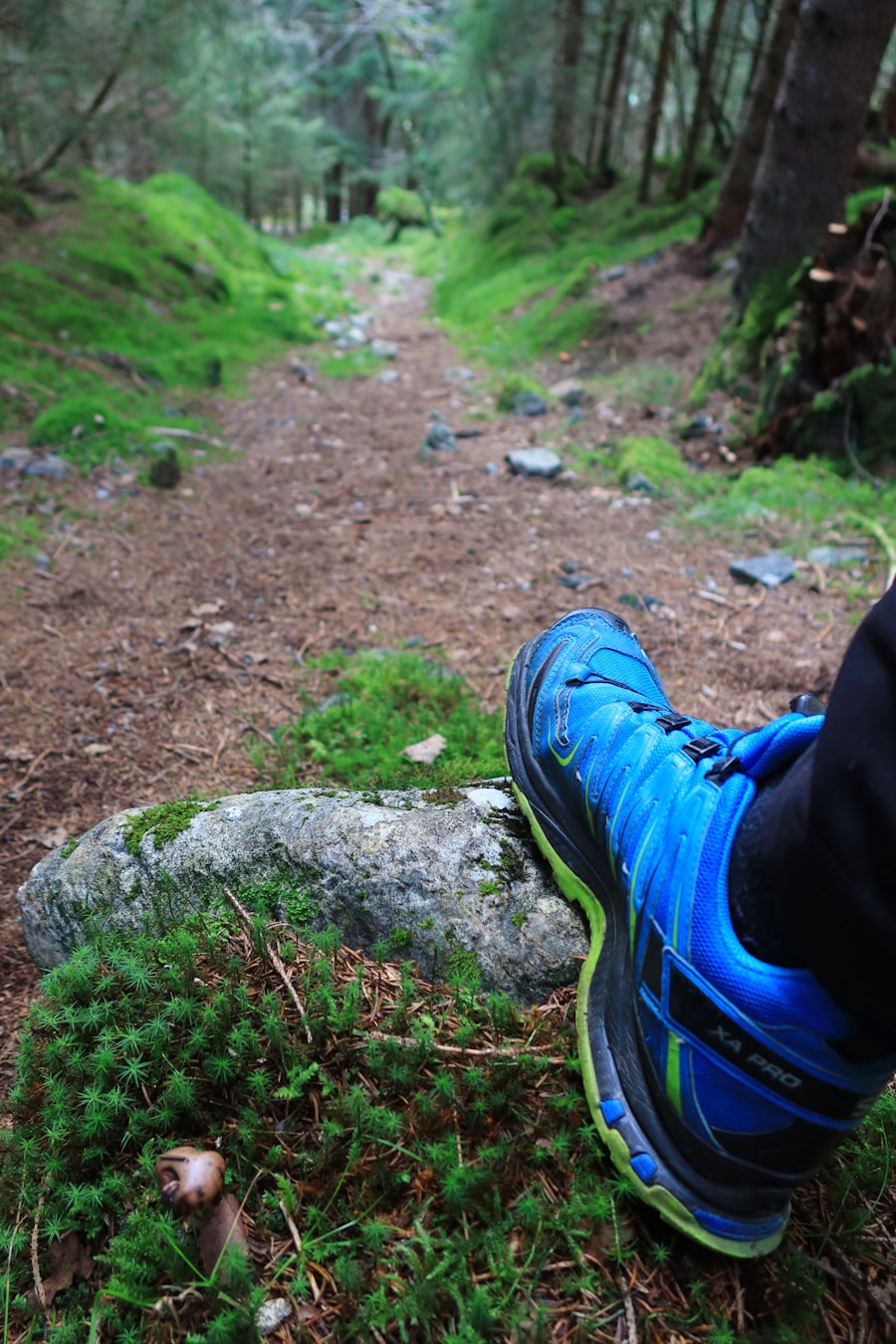Trail running shoes have gained significant popularity among outdoor enthusiasts, particularly those who enjoy hiking. These shoes, originally designed for the rigors of trail running, offer a unique blend of features that can enhance the hiking experience. Unlike traditional hiking boots, which are often heavier and bulkier, trail running shoes are typically lighter and more flexible, allowing for greater agility on uneven terrain.
This shift in footwear choice reflects a broader trend in outdoor activities where comfort and performance are prioritized. The appeal of trail running shoes for hiking lies in their ability to provide adequate support while maintaining a low profile. Hikers are increasingly seeking footwear that allows for quick movements and responsiveness, especially on technical trails.
As more people venture into the wilderness for both running and hiking, understanding the specific advantages of trail running shoes becomes essential for making informed decisions about gear.
Key Takeaways
- Trail running shoes are designed for off-road running and hiking on rugged terrain, providing stability, traction, and protection.
- Key features of trail running shoes include durable outsoles, protective toe caps, cushioned midsoles, and breathable uppers for comfort and support.
- Using trail running shoes for hiking offers benefits such as lightweight design, flexibility, and agility, allowing for faster and more natural movement on the trail.
- When choosing trail running shoes for hiking, consider factors such as terrain, weather conditions, foot type, and personal preferences for fit and comfort.
- Trail running shoes are compared to traditional hiking boots in terms of weight, support, traction, and versatility, with trail running shoes offering a more agile and natural feel on the trail.
Key Features of Trail Running Shoes for Hiking
Trail running shoes are engineered with several key features that distinguish them from traditional hiking footwear. One of the most notable characteristics is their lightweight construction. Typically made from synthetic materials, these shoes reduce the overall weight on the hiker’s feet, which can be particularly beneficial during long treks.
The lightweight nature of trail running shoes allows for quicker foot placement and less fatigue over extended periods. Another critical feature is the outsole design. Trail running shoes often incorporate aggressive tread patterns that provide superior traction on various surfaces, including mud, rocks, and loose gravel.
This enhanced grip is essential for maintaining stability on uneven terrain, reducing the risk of slips and falls. Additionally, many models include rock plates or protective overlays that shield the foot from sharp objects, ensuring comfort and safety during hikes. The cushioning system in trail running shoes also sets them apart.
Unlike traditional hiking boots that may prioritize stiffness and support, trail running shoes often feature responsive cushioning that absorbs impact while allowing for a natural foot movement. This flexibility can be particularly advantageous when navigating steep descents or rocky paths, as it enables hikers to adapt quickly to changing conditions.
Benefits of Using Trail Running Shoes for Hiking

The benefits of using trail running shoes for hiking extend beyond mere comfort. One significant advantage is the increased speed and agility they offer. Hikers wearing trail running shoes can often move more quickly over varied terrain compared to those in traditional boots.
This can be particularly advantageous when traversing challenging sections of a trail or when trying to cover more ground in a limited timeframe. Moreover, trail running shoes promote a more natural gait. The lightweight design and flexible construction encourage a midfoot or forefoot strike, which can lead to improved biomechanics during hiking.
This natural movement pattern not only enhances efficiency but also reduces the risk of injury associated with improper foot placement or excessive heel striking. Another benefit is the breathability of trail running shoes. Many models feature mesh uppers that allow for airflow, helping to keep feet cool and dry during strenuous hikes.
This ventilation is crucial in preventing blisters and discomfort caused by moisture buildup, especially on warm days or during intense physical activity. The combination of breathability and lightweight materials contributes to an overall more enjoyable hiking experience.
Considerations When Choosing Trail Running Shoes for Hiking
| Consideration | Description |
|---|---|
| Fit | Ensure the shoes fit snugly but not too tight to prevent blisters and discomfort during long hikes. |
| Traction | Look for shoes with aggressive lugs and a sticky rubber outsole for better grip on varied terrain. |
| Protection | Consider shoes with a rock plate and toe cap for protection against sharp rocks and debris on the trail. |
| Support | Choose shoes with adequate ankle support and cushioning to prevent injuries on uneven surfaces. |
| Waterproofing | Depending on the climate, consider waterproof shoes to keep your feet dry in wet conditions. |
| Breathability | Look for shoes with breathable materials to prevent overheating and moisture buildup inside the shoes. |
When selecting trail running shoes for hiking, several factors should be taken into account to ensure optimal performance and comfort. First and foremost is fit. A proper fit is essential for preventing blisters and ensuring stability on uneven terrain.
Hikers should try on multiple sizes and styles, considering factors such as toe box width and arch support to find the best match for their foot shape. Another important consideration is the type of terrain that will be encountered during hikes. Different models of trail running shoes are designed for specific conditions, such as rocky trails, muddy paths, or hard-packed surfaces.
Hikers should assess their typical hiking environments and choose shoes with appropriate tread patterns and cushioning systems to match those conditions. Durability is also a key factor in the selection process. While trail running shoes are generally lighter than hiking boots, they should still be robust enough to withstand the rigors of outdoor use.
Hikers should look for shoes made from high-quality materials that can endure rough terrain without compromising performance. Additionally, considering the shoe’s water resistance or waterproof capabilities can be crucial for those who frequently hike in wet conditions.
Comparison of Trail Running Shoes and Traditional Hiking Boots
The comparison between trail running shoes and traditional hiking boots reveals distinct differences that cater to varying preferences and hiking styles. Traditional hiking boots are often characterized by their sturdy construction, providing significant ankle support and protection against rough terrain. This makes them an excellent choice for hikers who carry heavy packs or navigate particularly challenging trails where stability is paramount.
In contrast, trail running shoes prioritize lightweight design and flexibility. While they may lack the same level of ankle support as boots, they compensate with agility and speed. Hikers who prefer a more dynamic approach to their outdoor adventures may find trail running shoes more suitable for their needs, especially on well-maintained trails or during fast-paced hikes.
Another notable difference lies in the cushioning and shock absorption capabilities. Hiking boots typically feature stiffer midsoles designed to handle heavy loads and provide stability on uneven ground. Trail running shoes, however, often incorporate softer cushioning systems that allow for greater responsiveness and comfort during rapid movements.
This distinction can significantly impact a hiker’s experience, particularly when navigating steep descents or rocky paths.
Tips for Transitioning from Hiking Boots to Trail Running Shoes

Transitioning from traditional hiking boots to trail running shoes requires careful consideration and gradual adaptation to ensure a smooth experience. One of the first steps is to break in the new footwear gradually. Hikers should start by wearing trail running shoes on shorter hikes or during casual walks to allow their feet to adjust to the different support and cushioning levels.
It’s also essential to pay attention to foot mechanics during this transition period. Hikers may need to modify their gait slightly when switching to trail running shoes due to the differences in heel height and flexibility. Practicing proper foot placement and being mindful of stride can help prevent injuries as one adapts to the new footwear.
Additionally, investing in quality moisture-wicking socks can enhance comfort during this transition. Proper sock choice can help prevent blisters and improve overall foot health while wearing trail running shoes. Hikers should also consider using insoles tailored to their specific foot shape or arch type for added support during longer hikes.
Popular Brands and Models of Trail Running Shoes for Hiking
Several brands have established themselves as leaders in the market for trail running shoes suitable for hiking. Salomon is renowned for its innovative designs that combine performance with comfort. The Salomon Speedcross series features aggressive outsoles ideal for muddy conditions, making them a favorite among hikers who tackle diverse terrains.
Another popular brand is Altra, known for its zero-drop platform that promotes a natural foot position while providing ample cushioning. The Altra Lone Peak model has gained a loyal following among hikers seeking a balance between comfort and performance on long-distance trails. Merrell is also a well-respected name in outdoor footwear, offering models like the Merrell Trail Glove that emphasize minimalism while still providing adequate protection against rough terrain.
These shoes are particularly appealing to those who prefer a closer-to-ground feel without sacrificing durability. Lastly, Hoka One One has made waves in the trail running community with its maximalist cushioning approach. Models like the Hoka Speedgoat are designed for long-distance comfort while maintaining traction on technical trails, making them an excellent choice for hikers looking to cover significant distances without compromising on comfort.
Is Using Trail Running Shoes for Hiking a Practical Choice?
The decision to use trail running shoes for hiking ultimately depends on individual preferences and specific hiking conditions. For those who prioritize speed, agility, and comfort over traditional support features found in hiking boots, trail running shoes can be an excellent choice. Their lightweight design, superior traction, and breathability make them well-suited for various terrains and weather conditions.
However, it’s essential to consider personal foot mechanics, typical hiking environments, and individual comfort levels when making this choice. As outdoor enthusiasts continue to explore new ways to enhance their experiences in nature, trail running shoes represent a compelling option that aligns with modern preferences for versatility and performance in outdoor footwear.
If you are considering using trail running shoes for hiking, you may also be interested in reading about the best hard case golf travel bags for Spring 2025. These bags are designed to protect your golf clubs while traveling, just like how trail running shoes are designed to provide support and traction on rough terrain. Check out the article here for more information on how to keep your gear safe during your outdoor adventures.
FAQs
What are trail running shoes?
Trail running shoes are a type of footwear designed specifically for running on off-road trails. They typically have a more aggressive tread pattern and provide stability and protection for the feet on uneven terrain.
Can trail running shoes be used for hiking?
Yes, trail running shoes can be used for hiking, especially on trails and terrain that are similar to those for which they were designed. They offer good traction, stability, and protection, making them suitable for light to moderate hiking.
What are the advantages of using trail running shoes for hiking?
Trail running shoes are generally lighter and more flexible than traditional hiking boots, which can provide a more comfortable and agile hiking experience. They also offer good breathability and can be more versatile for different types of terrain.
Are there any limitations to using trail running shoes for hiking?
While trail running shoes can be suitable for many hiking situations, they may not provide the same level of ankle support and protection as traditional hiking boots, especially on more rugged or technical terrain. It’s important to consider the specific demands of the hike and choose footwear accordingly.
What should I consider when using trail running shoes for hiking?
When using trail running shoes for hiking, it’s important to consider the length and difficulty of the hike, as well as the type of terrain. Additionally, make sure the shoes provide enough support and protection for your feet and ankles, and consider wearing moisture-wicking socks for added comfort.
